
The Future of Food
As society embraces maximum convenience, UW alumni are transforming the business of on-demand dining.
In 2012, Doug Hamaker ’10 and Henry Aschauer ’10 opened Roast Public House with a fresh vision for the campus end of State Street: a sit-down dining experience that rivaled student favorites around the Capitol Square. Before long, it was a hit.
By 2019, it was a relic.
Roast closed its doors for good last spring. The decisive moment wasn’t an empty dining room; it was the sizzling success of the owners’ second restaurant, Forage Kitchen, which opened in 2015. The fast-casual Forage serves specialty salads and grain bowls, offering an assembly line of fresh, colorful produce and warm proteins. In a matter of minutes you can build your own bowl and head out with a full meal in hand.
Hamaker and Aschauer didn’t intend it, but their adjacent State Street restaurants served as a litmus test for a dining trend that’s remaking the restaurant industry. And the public has spoken (er, eaten): it wants its food on the go.
When Forage began offering delivery in 2016, it received two or three orders per day. But over the last year, it’s “just exploded,” Hamaker says, with the restaurant receiving up to 40 delivery orders during the lunch hour alone.
The demand for delivery is so intense that Forage is considering opening an off-site fulfillment center for online orders — in effect a food-service factory — that would help to manage the tricky triage of in-person and online patrons. Such “virtual” or “ghost” restaurants, offering only delivery and dispensing with the storefront altogether, are thriving in big cities like Chicago and New York.
Welcome to the future of food. UW alumni like the Forage duo and the founders of the delivery company EatStreet are on the front lines of on-demand dining. And they’re transforming not only the way we eat, but also the way we live. Whether it’s a change for the better remains a compelling — and complicated — question.
A Delivery Arms Race
In a stagnating industry, most restaurants have little choice but to chase the lucrative food-delivery market.
Nationally, delivery revenue nearly doubled between 2011 and 2017, from $23 billion to $43 billion — and it’s expected to reach $76 billion by 2022, according to the market research firm Cowen and Company. That’s quickly approaching 10 percent of total industry sales.
From fast-food chains like McDonald’s to Madison sit-down staples like the Old Fashioned, restaurants of all kinds have joined the delivery arms race that for decades was left to pizza and Chinese food chains.
Few restaurants can afford to deliver the food themselves. Building the infrastructure is massively expensive, requiring investments in staffing, tracking technology, and insurance coverage. Instead, they’re turning to third-party companies like Madison-based EatStreet, which Matt Howard ’11, Eric Martell ’12, and Alex Wyler x’11 cofounded in their UW–Madison dorm rooms in 2010.
EatStreet’s mission is maximum convenience for customers, streamlining the food ordering and delivery process. Through its website and phone app, you can quickly search nearby restaurants and place a digital order. It tracks — remarkably accurately — the progress and estimated delivery time of your order, so you can follow along as the restaurant prepares your food and the EatStreet driver hits the road.
EatStreet has partnered with 15,000 restaurants — 400 in Madison alone — across 250 cities, with 200 full-time employees and a fleet of 3,000 drivers.
While it started as just a marketplace for online ordering, its acquisition of Philadelphia-based Zoomer in 2017 propelled EatStreet into the delivery market, competing with giants like Grubhub, Uber Eats, and DoorDash. EatStreet has survived by sticking to its college-town roots, specializing in mid-tier cities with younger populations.
The company has raised more than $50 million over three rounds of funding, but its first investment came in the form of a campus business competition, which awarded the cofounders $10,000 and a free office space — a fraction of the size of its 20,000-square-foot, rooftop headquarters today.
“We wouldn’t have been able to start this company without the university,” says Howard, now the company’s CEO, who was named on the 2018 Forbes 30 under 30 list.
Howard says EatStreet’s pitch to restaurants is pretty easy: you handle the food, and we’ll handle everything else. EatStreet receives a flat fee from the customer — based on distance and starting at $1.99 — and a percentage of the sale from the restaurant. Restaurants instantly experience an increase in sales, new customers, and recognition. Just appearing on the EatStreet marketplace effectively serves as free marketing.
“We always used to use this analogy that it’s like a food court in the mall,” Howard says. “You walk into the food court and look at what you want and then you pick. If you’re not in the food court [or on EatStreet], you’re not an option — you can’t get that sale.”
It sounds like everybody wins — but, of course, it’s more complicated than that. For all the booming business, restaurants like Forage face major risks in the on-demand food economy.
A Catch-22
Profit margins in the food industry are notoriously narrow — few restaurants achieve the modest goal of 10 percent. With third-party delivery fees ranging from 15 to 30 percent per order, some restaurants are lucky to break even on an individual sale.
“It’s definitely pricey for us,” Hamaker says of Forage’s delivery arrangement with EatStreet. “It hurts your margins. But it’s a catch–22 because you’re getting all these new customers, who hopefully then come in your door.”
For restaurants like Forage, it’s a gamble on incremental sales — bonus orders that the restaurant is getting on top of its normal in-person business.
That concept is central to any food-delivery company’s pitch. And it works out that way if a customer decides on delivery, opens up EatStreet, and finds Forage Kitchen. The risk is when the ease of EatStreet prompts a loyal customer to stop in less and order online more in the future.
“I’m not sure it’s incremental business these days,” says Jake Dean MBA’09, director of the Grainger Center for Supply Chain Management at the Wisconsin School of Business. “We’re all getting to this point where we don’t want to leave our houses for anything.”
Studies have shown that customers who use a third-party delivery service become more loyal to that marketplace than to the actual restaurants. “I’d argue it’s no different with the travel industry,” Howard says. “People are more loyal to [the booking companies] Priceline and Expedia than they are to Hilton and Marriott hotels.”
Odessa Piper, a James Beard Award–winning chef and the founder of L’Etoile restaurant in Madison, considers the third-party delivery model “profoundly unsustainable” for restaurants, comparing the trend to the two-for-one craze that became popular in Madison in the ’70s and ’80s.
“It was like getting an addiction to crack cocaine,” Piper says. “If your restaurant advertised this two-for-one deal, you just got flooded with customers. But the problem was that you were giving these really deep discounts in order to get butts in the seats. … At the end of the day, you were giving away so much food. And it didn’t last.”
Howard, however, believes that a delivery partnership is mutually beneficial and that restaurants can find ways to make it profitable. He notes that restaurants no longer have to pay for traditional marketing, such as distributing printed menus.
“I had a restaurateur call me and say, ‘I’m not going to be able to make it. Can we do one last promotion through EatStreet?’ That was five years ago, and they’re still operating today,” Howard says. “We helped them figure it out.”
For companies that are leading the way in consumer convenience, figuring out how to make their own business models pay off is another matter. While the on-demand economy is pervasive, it’s yet to prove profitable.
The Last Mile
It’s not for lack of sales or cash flow. Uber Eats earned $1.5 billion in revenue in 2018, a 149 percent increase from the year prior. In May, DoorDash completed a $600 million round of investment that valued the company at $12.6 billion. Both companies have yet to turn a profit.
“The part of the supply chain that goes right to you — your Amazon delivery or your Uber or Lyft ride — is very, very, very expensive,” Dean says, noting that Amazon can compensate for losses in delivery with revenue from its other services. “It is really cheap to ship something from a factory to a distribution center to a Target store. Where things get significantly more expensive is between Target and your house.”
Such is the dilemma of the “last mile” that has bedeviled delivery dreams for decades. “If you make a $7 Amazon order and it showed up at your house the next day, there is no way that Amazon made money on that $7 order,” Dean says. But backed by venture capital or profits from other parts of their business, companies like Uber and Amazon can afford to innovate and test the limits of their supply chain networks. Next-day delivery for consumer goods is already becoming the new normal.
Eventually, the on-demand industry will face its biggest challenge yet: an economic recession. What if investor money dries up? What if consumers have less discretionary cash? What if the new standard of immediacy is not actually economically sustainable?
Fortunately for food-delivery companies, the prospects of profitability look healthier, as they collect delivery fees from both the customer and the restaurant. EatStreet is “knocking on the door of profitability,” Howard notes. “We could actually be profitable today with just slowing down our marketing spend, but we want to continue to grow.”
Piper, who’s nationally recognized for bringing the farm-to-table restaurant movement to Madison, worries about the industry’s sustainability in other ways, including the environmental toll of takeout packaging. “Convenience is great,” she says, “but the takeout trend has just sort of gotten absurd — like people using a Styrofoam cup for their coffee while they’re sitting inside the café … as if they have to be able to get up in case a tornado is around the corner.”
Piper is also concerned about the toll on human interaction. She holds out hope that younger generations will gravitate back to sit-down meals with family and friends.
“Millennials are a culturally rich generation. They’re not shallow. They’re not vapid,” she says. “And maybe they will discover the pleasure of socializing at their neighborhood places … and realize that the food-on-demand trend is contributing to global warming and isn’t necessarily as inexpensive or as convenient as it appears.”
The on-demand economy is quietly affecting the human experience in other ways, including the workplace. To find out how, I got to know the person whom most customers think little about: the delivery driver.
A Day in a Driver’s Life
“This is my office,” says Jordan Rouse, pointing out the window of his red Honda CR-Z to the UW Arboretum tree line that wraps around the Madison Beltline.
Rouse, 23, is one of EatStreet’s 3,000 delivery drivers. I hop in his car on a summer evening to race along with hot meals for demanding consumers.
“I thrive on the variety,” he says, adding that he hated the monotony of his office job and appreciates the flexibility of EatStreet. He submits his available hours before each week and can clock in and out from the comfort of his car. An automatic algorithm assigns him nearby deliveries, which he accepts on his phone and typically completes within 20 minutes. If there’s a problem, he can quickly reach the dispatch team via text.
As we wait for a Japanese restaurant in Monona to finish an order, we discuss whether his job could one day be replaced by driverless cars. Uber Eats tested drone delivery last summer, with the long-term vision of dropping food on mailbox landing pads. Rouse is skeptical: “There’s too much room for error.”
He occasionally encounters small problems himself. On our first delivery, the navigation takes us to the right area but the wrong building. On another, he has to park a few blocks from the restaurant because of construction.
Of course, customers don’t see the food’s journey — just the bag arriving at their door. If Rouse were to get in an accident on the job, another driver would be assigned to pick up the food from him and complete the delivery, he says.
“Customers don’t know that I stopped for an ambulance or avoided a pedestrian in the parking lot,” he says. “But that’s how it should be. That’s my job. … Our customers pay to not be stressed out. They outsource the stress to me.”
We discuss that societal shift toward convenience. It’s not just food at our fingertips. We live in an era of on-demand everything: transportation with Uber and Lyft, lodging with Airbnb, grocery delivery with Instacart, nearly everything else with Amazon.
The on-demand — or “gig” — economy has targeted established services like hotel stays and taxi rides by offering similar experiences for less money and hassle. The companies eliminate overhead, contracting with people who have an asset to share instead of investing in full-time employees. Away for the weekend? Rent out your house. Car sitting in your driveway? Give a ride.
The on-demand industry has a reputation for skirting regulation. Uber famously sped into the marketplace by asking for forgiveness rather than permission. When cities reacted with threats of banishment to protect taxi companies, customers — with a taste of the convenience of not having to call a cab — turned into de facto advocates for Uber.
Uber has faced backlash when its fluctuating, supply-and-demand pricing model has spiked during emergencies, like Hurricane Sandy and the London terror attack. In the food-delivery world, DoorDash changed its tipping model — it was effectively pocketing customer tips — after a public outcry in July.
“One of my fears, frankly, is that when you get really competitive industries, you get questionable choices by companies,” Howard says.
A common criticism of on-demand companies is their propensity for treating labor as a disposable commodity. Most of them classify their workers as independent contractors, releasing them from the obligation to provide workplace protections and benefits such as a minimum wage, health care subsidies, and overtime compensation. They argue that the job is supposed to be a supplemental source of income, though they do little to discourage full-time work.
EatStreet takes a different approach, hoping “to show drivers that this is a career,” Howard says. The company hires drivers as W–2 employees, ensuring they’re paid an hourly minimum wage regardless of how many orders they deliver. Drivers who work full time for a year have access to the company’s health care plans and 401k match.
“We think everyone’s drivers should be W–2, waged employees,” Howard says. “Don’t get me wrong, it’s not easy to follow all the compliance as a W–2, wage employer. But we do feel like it’s best for the individual driver.”
Rouse works full time for EatStreet as his sole source of income, which makes him something of a rarity in the gig economy. His wage guarantee is $10 per hour, but he brings home closer to $15 after tips. “It pays the bills,” he says. Like drivers for other food-delivery companies, Rouse supplies his own vehicle and pays for gas. He’s responsible for his car’s wear and tear, though he gets a reduced price for oil changes. He estimates that he puts on 1,800 miles per month for work.
On our last delivery together, Rouse and I pick up a bag of food at King of Falafel just south of downtown Madison and drive to an affluent cul-de-sac in Fitchburg. As we pull up to the house, we joke that a healthy tip is surely in the offing. The customer holds back her dog as she quickly grabs the bag and thanks Rouse.
“She tipped $1.32,” he says, unfazed, as he taps through his phone back in the car. “It was two orders of hummus.”
I ask for his reaction to driving across town to deliver a dip. He shrugs, noting that he’s delivered a single soda before.
“I’m paid to serve,” he says, “not to judge.”
“Our customers pay to not be stressed out. They outsource the stress to me.”
— EatStreet driver Jordan Rouse
A Good Thing or a Bad Thing?
As I sit down with Hamaker and Aschauer over the summer, I expect them to be in mourning over the recent loss of Roast Public House. After all, it was the sit-down dinner that inspired them to enter the food industry.
“We both grew up in houses where our parents were from that generation of preparing family dinners every single night and no matter what was going on during the day,” Aschauer says. “The intention was to collect everyone around the dinner table.”
But they’re at peace with the shift to grab-and-go customer service. And they’re clearly excited about the future of Forage. They just opened two new locations in Madison and are eying expansion to other parts of the Midwest.
After all, they’ve changed, too. Forage is more in line with their own eating habits and busy lifestyles as young business owners with growing families.
“The lunch hour has been diminished or even completely removed for some people,” Aschauer says. “There’s a whole separate conversation of whether that’s a good thing or a bad thing. But whatever we can do from a restaurant standpoint to cater to our customers’ eating habits, I think we’ll be better off.”
Yet, fearing that the scales could tip too heavily to delivery and jeopardize profits — EatStreet now accounts for nearly 15 percent of Forage’s sales — they’re experimenting with ways to entice people back to the storefront. Forage is developing its own online ordering app that will allow customers to skip the line and grab their food from a pickup counter, just as they do at the Starbucks next door.
It’s clear the dance with delivery has only begun.
Preston Schmitt ’14 is a staff writer for On Wisconsin.
Published in the Winter 2019 issue
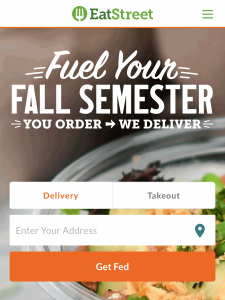
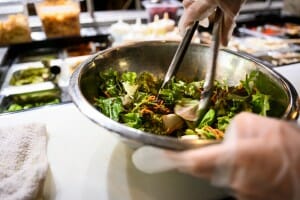
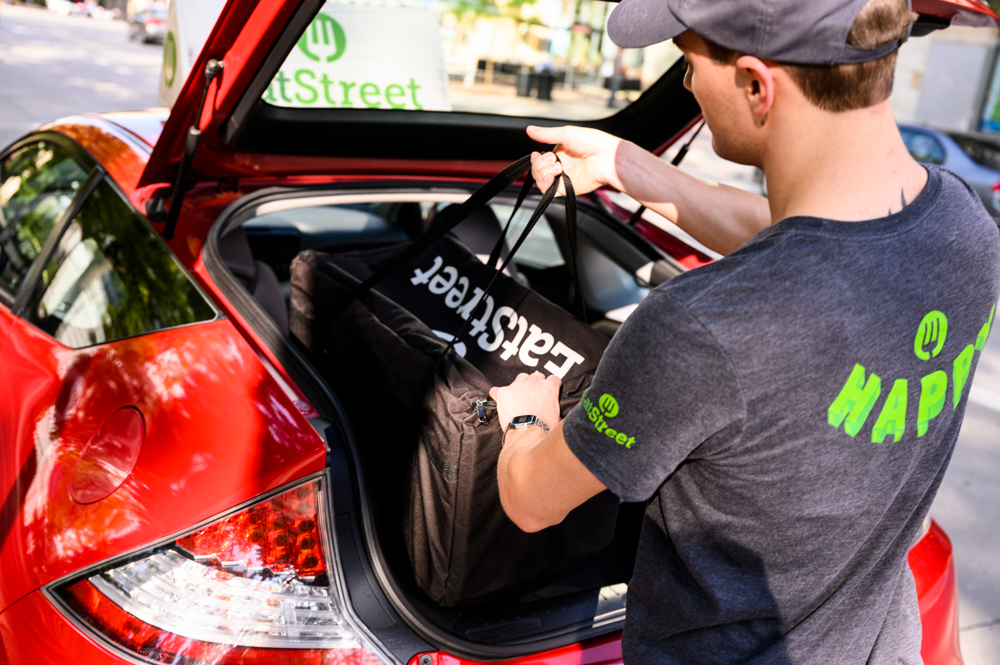
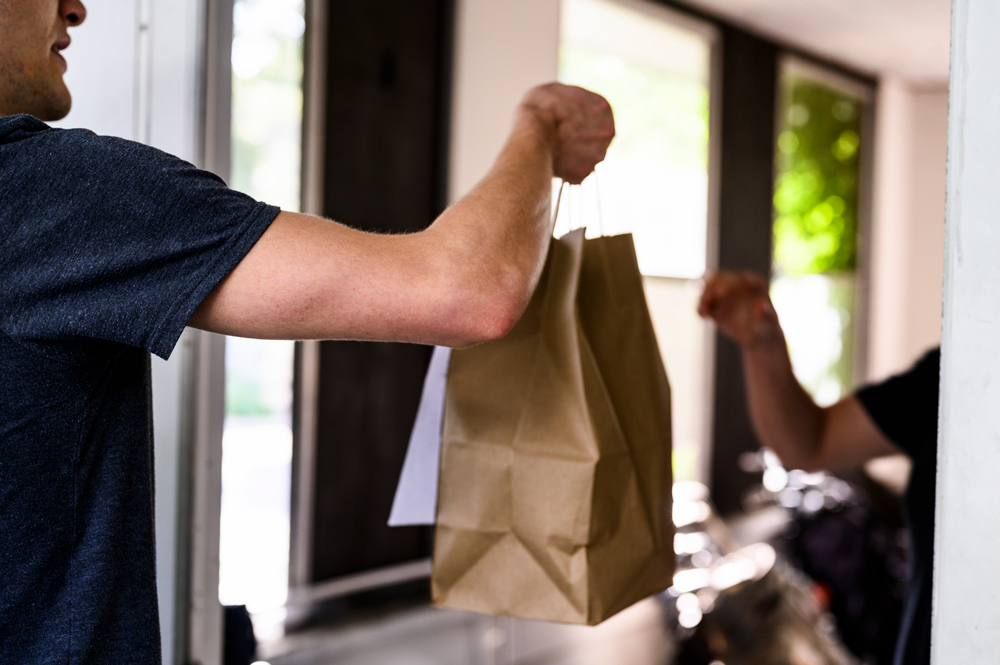
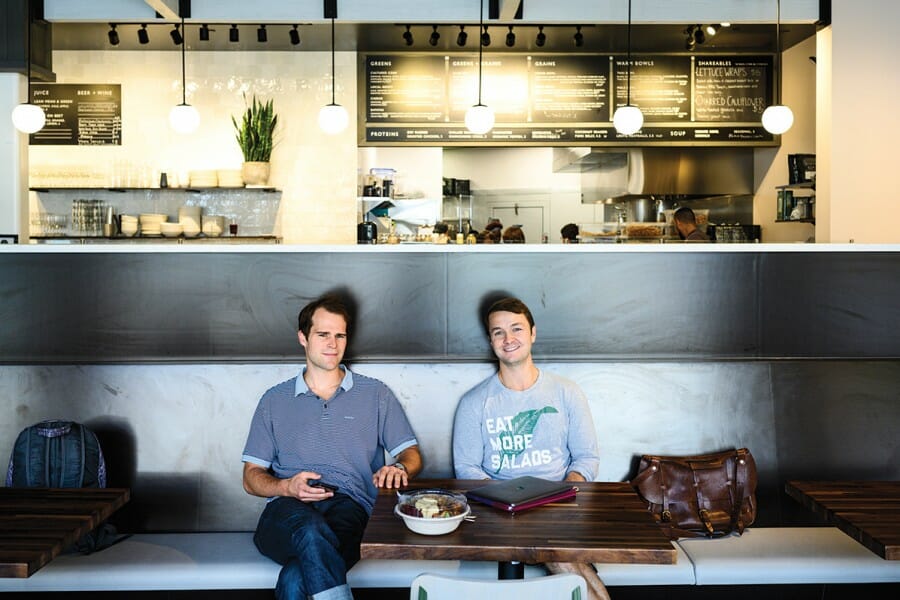
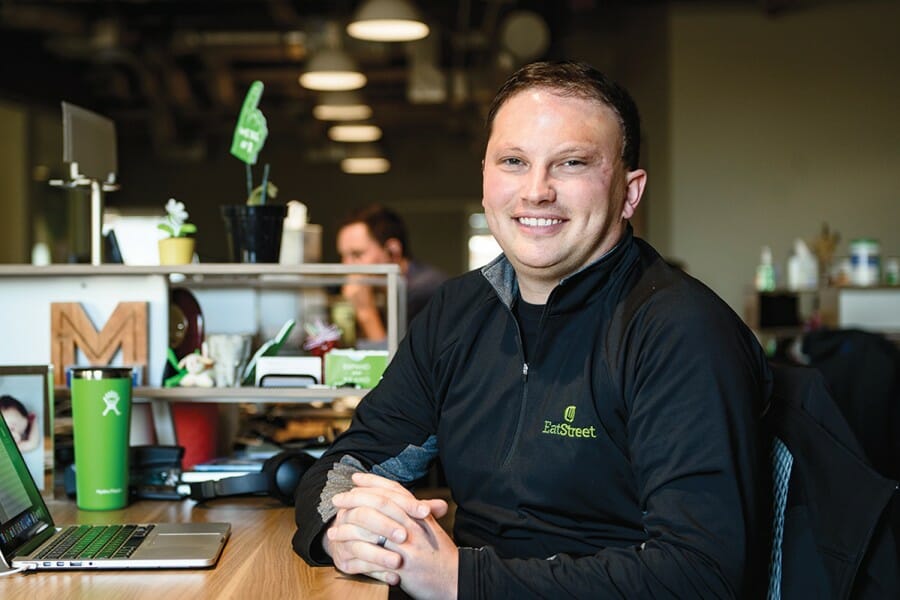
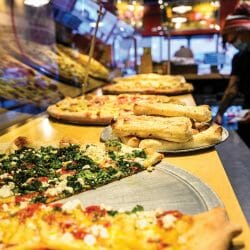
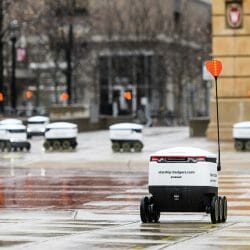
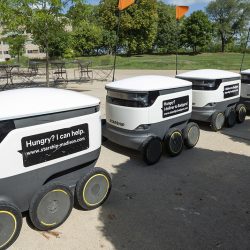
Comments
No comments posted yet.